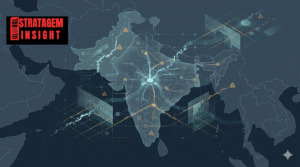Global Nuclear Zero: A Utopian Ideal or a Realistic Possibility?

A World Divided Between Destruction and Hope
The vision of Global Nuclear Zero (the world without nuclear weapons) has long been promoted by peace movements, diplomats and international organs. It is a noble concept: a world whereby there would be no nuclear weapons in the possession of any state and such a move will eradicate the possibility of a devastating nuclear war. However, even after several decades of negotiation and international agreements, there are still about 12,000 nuclear weapons around the world (Stockholm International Peace Research Institute (SIPRI), 2024). Full nuclear disarmament, though desirable morally, will be extremely unrealistic under the current circumstances in the international politics.
The development of nuclear disarmament dates back to events that happened in 1945, after Hiroshima and Nagasaki that revealed the destructive potential of atomic weapons never before seen in human history. Since that time, there have been many treaties that tried to limit nuclear arsenals. The largest framework has been the Treaty on the Non-Proliferation of Nuclear Weapons (NPT), signed in 1968, which aimed to deter the proliferation of nuclear weapons and instead advance disarmament and peaceful nuclear cooperation. However, the NPT formally recognizes five nuclear-weapon states and there are others, such as India, Pakistan and North Korea, which have built nuclear capability outside this regime.
Despite the decline in nuclear stockpiles since the Cold war due to bilateral treaties like the Strategic Arms Reduction Treaties (START) the total removal of nuclear arsenals is yet to be realized. Security doctrines are still dominated by nuclear deterrence. The concept of deterrence, which assumes that armed conflict is deterred by the threat of retaliation, is still a key element in the policies of the United States, Russia, China, India, and Pakistan, in terms of strategy. To these states, nuclear weapons are considered as essential security guarantors in an unsynchronized international system.
Geopolitical conflicts also are a hindrance to disarmament. The US and Russia, which collectively own over 90% of the world nuclear warheads (SIPRI, 2024), are re-engaging in a strategic competition. China in the meantime is upgrading its nuclear arsenal and regional tensions in South Asia reduce the chances of disarmament by either India or Pakistan. That North Korea has been developing its nuclear weapon despite world condemnation highlights the significance of nuclear weapons to states with existential security concerns.
Furthermore, instead of heading toward disarmament, several nations with nuclear weapons are modernizing their stockpiles. U.S. Congressional Budget Office (CBO) estimates that Washington will use more than 750 billion dollars in the decade to sustain and modernize its nuclear forces. Russia and China are also investing in sophisticated delivery systems and other nuclear countries are also strengthening their capabilities. With the nuclear weapons embedded in national defense policy, such modernization initiatives demonstrate that nuclear arms are still resilient to disarmament efforts.
A more significant effort at seeking a legal ban on nuclear weapons is the Treaty on the Prohibition of Nuclear Weapons (TPNW), which came into force in 2021. Still, it is not effective, since no nuclear-armed state has signed it. The treaty is a normative statement rather than a practical disarmament mechanism without the involvement of the states that literally hold nuclear weapons. There are also problems with verification: the disarmament of weapons and the prevention of hidden programs also look like difficult tasks, despite technological control systems.
The proponents of the technology propose that satellite surveillance, AI, and cross-border checks would help build trust and increase transparency. These tools may play a part in the verification process, but they will not completely eliminate the fear of deception or of secret stockpiles. The deep-rooted mistrust among the states, aggravated by the great power rivalry and conflict in the region, does not allow instilling confidence in the comprehensive disarmament.
Even the nature of the international system itself is an obstacle to total nuclear abolition. States are focused on self-preservation because they operate in a system of anarchy, where there is no central authority to provide security. Nuclear power can be the ultimate deterrent especially in cases of smaller states which are threatened by other more dominant states. Nuclear weapons can be the way to survival in such a situation when external isolation and besieging situations make people feel isolated and surrounded, which can be seen in the case of North Korea.
With such dynamics, it seems unlikely that Global Nuclear Zero will be attained in the foreseeable future. Although morally and humanitarianly right, the concept is not linked to the strategic demands of the states. Even partial disarmament efforts have been stagnant in recent years as arms control treaties like the New START Treaty are undergoing uncertainty and partial renewal.
This does not imply that disarmament endeavors are irrelevant. Arms control, non-proliferation regimes and regional nuclear denuclearization agreements remain important in the reduction of the risks related to the nuclear. Although it might not be enough to fully eliminate competition, confidence-building efforts, dialogue, and risk-reduction frameworks may be used to contain competition and avert escalation. It is worth noting that these programs may minimize the possibility of nuclear war-thus contributing to global security.
Although the goal of Global Nuclear Zero has remained an inspiration to the world, there exist numerous geopolitical rivalries, policies of deterrence and programs of modernization which made it practically unfeasible. The atomic weapons are entrenched in the strategic calculus of the major powers. To a large extent therefore, as much as arms reduction and risk management measures can and must be implemented, eliminating all arms and high-risk levels remains a utopian dream rather than a true policy solution.



